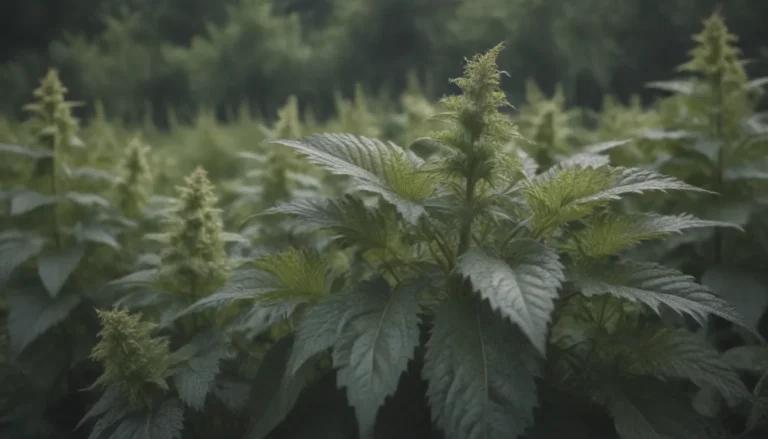Transforming Your Yard: How to Replace Grass With a Garden Bed

Are you tired of the endless cycle of mowing, weeding, and fertilizing your lawn? Do you dream of a more aesthetically pleasing landscape that also provides space for growing your own food or cultivating a beautiful flower garden? If so, you’re not alone. Many homeowners are now exploring the benefits of replacing traditional grass lawns with garden beds filled with vegetables, flowers, or a mix of shrubs and blooms.
By integrating planting areas within your lawn, you can create a visually stunning landscape that requires less maintenance while also offering the opportunity to engage in a fulfilling gardening hobby. But before you can start planting, you’ll need to deal with the turfgrass that currently covers your yard. Turfgrass is resilient and quick to spread, so it’s important to remove it properly to prevent it from invading your new garden bed.
In this comprehensive guide, we’ll explore various methods for removing or killing grass to make room for a garden bed. From labor-intensive sod busting to environmentally friendly solarization and smothering techniques, we’ll cover all the options available to help you create the garden of your dreams. So put on your gardening gloves and let’s get started!
Why Replace Grass With a Garden Bed?
Before we dive into the nitty-gritty of removing grass from your yard, let’s take a moment to explore the benefits of transforming your lawn into a garden bed:
- Reduced Maintenance: Less turfgrass means fewer mowing, weeding, and fertilizing tasks.
- Increased Aesthetics: Planting areas can enhance the visual appeal of your landscape.
- Food Production: Vegetable gardens provide fresh, homegrown produce.
- Flower Gardening: Cultivate a vibrant flower garden for added beauty.
- Environmental Benefits: Reduce water consumption and chemical use typically associated with maintaining a traditional lawn.
With these benefits in mind, let’s explore the various methods you can use to replace grass with a garden bed.
1. Sod Busting
The most physically demanding method of removing grass involves manually cutting and removing sod from the area. While this approach requires significant effort, it ensures that the grass is entirely removed, preventing regrowth in the garden bed.
How to Do It:
- Outline the garden area using a garden hose or string.
- Water the planned garden area to soften the soil.
- Use a sharp spade to cut the sod along the edges of the garden bed.
- Cut the area into narrow strips using the spade.
- Remove the sod, ensuring to get as many roots as possible.
Pros:
– Once done, you have a bed ready for planting.
– Minimal planning required.
Cons:
– Physically demanding.
– May require assistance for individuals with back or joint issues.
2. Solarize the Grass
Solarization involves using the sun’s heat to kill grass and weeds in the planned garden area. While this method requires patience and planning, it can effectively eradicate unwanted vegetation without the need for manual labor.
How to Do It:
- Cover the garden area with thick plastic and leave it in place for several weeks.
- Seal the edges of the plastic to retain heat.
- For stubborn weeds, extend the solarization period.
- Once the grass is dead, remove the plastic, amend the soil, and start planting.
Pros:
– Kills grass and weeds effectively.
– Minimal physical work involved.
Cons:
– Requires patience.
– Extended solarization period for stubborn weeds.
3. Smother the Lawn
Smothering the grass involves covering the area with materials that deprive the grass of oxygen, causing it to die naturally over time. While this method requires little effort, it can take several months for the grass to fully decompose.
How to Do It:
- Cover the garden area with materials like old newspaper, carpeting, or cardboard.
- Allow the grass to die over the winter.
- Amend the soil in the spring before planting.
Pros:
– Minimal work required.
– Effective at killing grass.
Cons:
– Aesthetic concerns during the smothering process.
– Covering material may look unattractive.
4. Lasagna Gardening
Lasagna gardening is a method that involves layering organic materials over the garden area to smother the grass and create a nutrient-rich planting bed. While this approach requires planning and patience, it results in a fertile garden bed ready for planting.
How to Do It:
- Apply a thick layer of cardboard or newspaper over the grass.
- Layer organic materials like compost, leaves, and peat moss over the cardboard.
- Allow the layers to decompose over several months.
Pros:
– Easy method with minimal effort.
– Creates fertile garden soil.
Cons:
– Requires advance planning.
– Potential for insect and animal pests.
5. Build Raised Beds
If your soil quality is poor or unsuitable for planting, building raised beds is a quick and effective solution. By constructing raised structures and filling them with quality garden soil, you can create an instant garden bed without the need to remove existing grass.
How to Do It:
- Build a raised structure around the garden perimeter.
- Fill the bed with a mixture of garden soil and organic amendments.
- Plant directly in the raised bed without smothering the grass.
Pros:
– Quick and easy method.
– Ideal for poor soil conditions.
Cons:
– Additional cost for materials.
– Initial investment required for soil and amendments.
6. Apply Herbicides
For a quick and thorough removal of grass, herbicides can be used to kill the vegetation in the planned garden area. While this method requires caution, it provides a fast and effective solution for grass removal.
Warning: Herbicides should be used with caution, and environmental and health implications should be considered before application.
How to Do It:
- Apply a glyphosate-based herbicide to the grass area.
- Ensure thorough coverage of the grass.
- Wait for the grass to die before amending the soil and planting.
Pros:
– Quick and thorough grass removal.
– Minimal physical effort required.
Cons:
– Controversial method.
– Environmental and health concerns associated with herbicide use.
In conclusion, replacing grass with a garden bed can transform your landscape into a vibrant, low-maintenance space for growing your own food or cultivating beautiful flowers. By choosing the right method for removing grass based on your preferences and resources, you can create a garden that enhances the beauty and functionality of your outdoor space.
So whether you opt for the physical challenge of sod busting, the patience of solarization, or the simplicity of smothering, there’s a method that suits your needs and preferences. Take the first step towards creating your dream garden bed today and enjoy the beauty and rewards of a lush, thriving landscape right outside your door.





